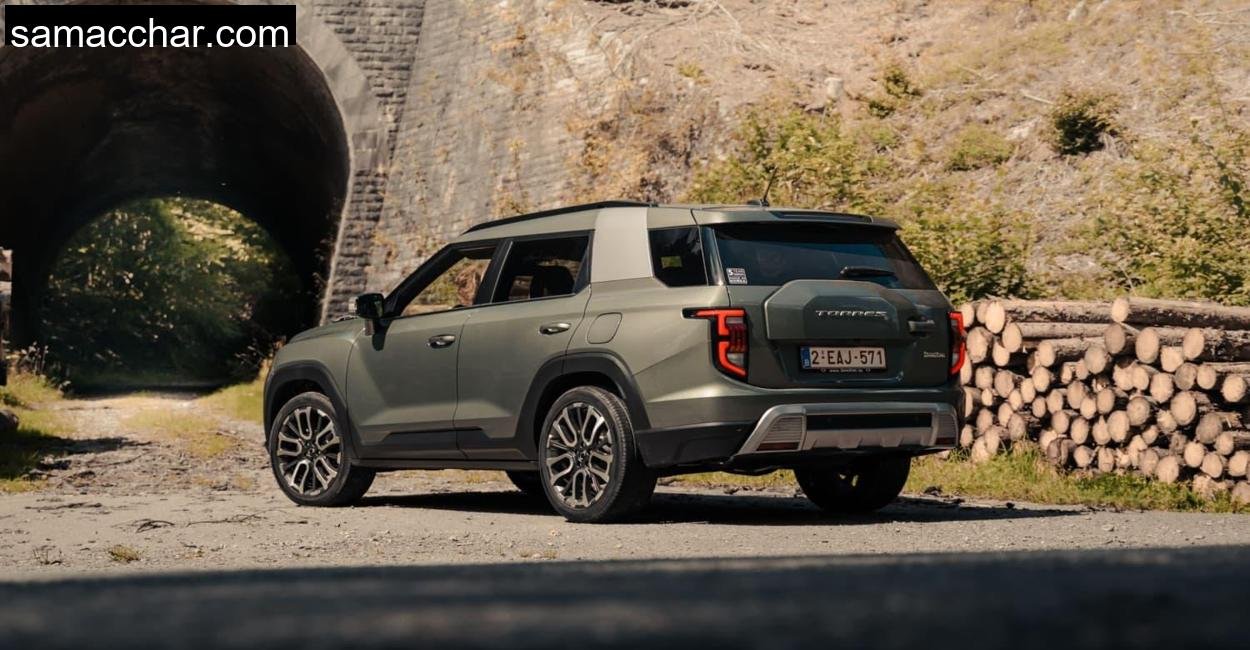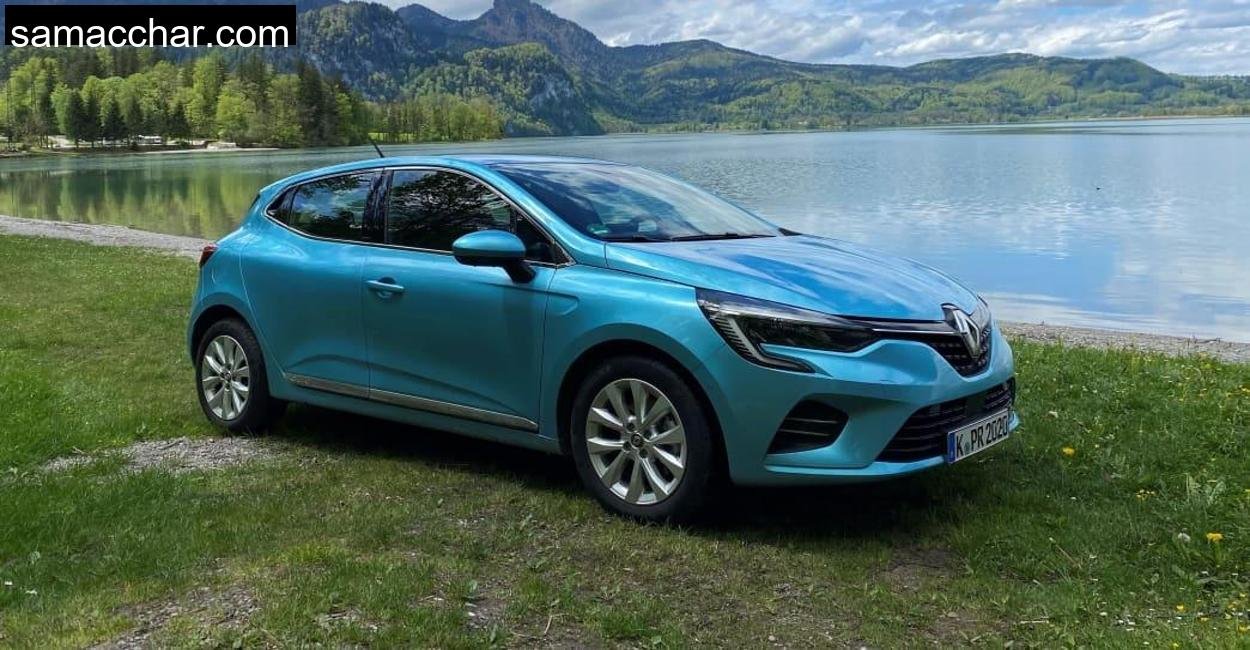SsangYong Torres: Off-road vehicle or SUV?
It looks like an off-roader. There’s no denying that. The Torres stands proud with angular lines, a wide upright grille, underbody cladding, and roof rails that seem to beg for a cargo box or a set of bikes. It even sports a faux spare wheel bulge on the tailgate that gives it a whiff of Land Rover Defender.
But once you dig beneath the styling, the reality’s less ambitious. It’s front-wheel drive by default, with an all-wheel drive option that lacks true off-road enhancements, no low-range gearbox, no locking differentials. The all-wheel version’s towing capacity tops out at just 1,500 kilograms, with a 60 kg tongue limit, which is tight for a modern bike rack with two e-bikes.
That said, it held its own on the gravel tracks of the Külf, clambering through ruts with surprising stability thanks to its tall sidewalls and confident weight distribution. But make no mistake, this is an SUV in the urban sense. The Torres doesn’t pretend to be a mountain goat, and that’s perfectly fine.
Big, but at least practical
Here’s where the Torres gets real points. The thing is huge, and not just in the abstract marketing sense. At 4.70 meters long, it easily rivals class heavyweights like the Kodiaq. The trunk is cavernous: 703 liters with the seats up, 1,662 liters flat. That’s washing machine, camping gear, dog crate, and four backpacks, no problem.
Rear passengers? They’re treated like first-class citizens. With the front seat set for a six-footer, I could stretch my legs out in the back without brushing the seat ahead. Headroom is generous, and the flat floor means even the middle seat is viable for longer trips. Up front, the driver and passenger enjoy broad, soft cushions and seats that didn’t cause a hint of backache even after a three-hour loop through the region.
The cabin feels… let’s say, unexpectedly pleasant. Soft-touch materials, neatly stitched faux leather, and minimal hard plastics. There’s a utilitarian honesty here, but not at the cost of comfort. It’s not luxury, but it’s not budget junk either. And that’s what surprised me.
Dusty but easy to use
In a world of overengineered cockpits, the Torres is refreshingly straightforward. A 12.5-inch digital instrument cluster shows the essentials, speed, fuel, lane assist, and doesn’t try to reinvent the wheel. The 9-inch center screen isn’t flashy, but it’s flanked by good old-fashioned physical buttons for main functions.
On our dusty ride through the Külf’s northern slope, navigating playlists or switching to navigation never felt like a chore. No endless swiping, no lag. Is it fancy? No. Is it fast? Not really. But it’s simple, and in some ways that’s more valuable when the sun’s in your eyes, your phone’s losing signal, and your hands are half-covered in trail dust.
If there’s a downside, it’s the sound system. It’s… adequate. If you care about audio quality, bring your headphones.
Driving behavior: firm to pleasant
The Torres drives like a solid couch, sturdy, but no athlete. On paved roads, it feels settled. The suspension leans firm, which helps with body control through curves but doesn’t isolate bumps as well as a Citroën or Skoda might.
Still, on our test loop through the Külf region, including rough rural asphalt and forest paths, the ride stayed controlled. The steering is vague and light, don’t expect much road feedback, but for everyday driving or even light touring, it does the job.
Its 1.5-liter turbocharged petrol engine (163 hp) won’t stir your soul, but it delivers its torque smoothly. The six-speed torque converter automatic deserves praise: shifts are unobtrusive, and when crawling up gravel slopes or doing a tight U-turn on a forestry path, it was flawless.
The Torres isn’t exciting to drive, but it doesn’t feel cheap either.
Very high consumption in the test
Here’s the catch. And it’s a big one. Despite modest power and front-wheel drive, the Torres is thirsty. On the highway, that number jumped above 11 l/100 km. That’s simply unacceptable for a modern SUV without AWD. Much of this comes down to poor aero, just look at its blocky front and flat underbody, and a weight of over 1.5 tons.
That thirst makes its budget appeal more complicated. It may be cheaper to buy, but you’ll feel it at the pump. And with 246 g CO2/km, it’s hard to ignore the environmental impact either.
Price: A real bargain?
At first glance, yes. For under €40,000, you get a fully loaded, brand-new mid-size SUV with character. Even the higher-spec “Quartz” trim at €41,990 brings enough creature comforts, blind-spot assist, navigation, 18-inch alloys, and heated seats, to justify the price.
Our test car in “Forest Edition” trim tipped the scales at €47,490. And here’s where the question gets tricky. At that price, you’re entering territory shared by hybrids and plug-ins with vastly better efficiency. The Renault Espace or Kia Sportage Plug-in start to look like better long-term bets.
Still, if your budget is tight, and you want something with road presence, genuine space, and rugged flair without frills, the Torres might make sense. Just be honest with yourself about the fuel costs.
Conclusion
The SsangYong Torres surprised me. Not with performance, not with tech, and certainly not with efficiency. But it surprised me with honesty. It looks rugged but doesn’t pretend to be a true off-roader. It drives comfortably but doesn’t claim to be a canyon carver. It offers loads of room, a calm ride, and straightforward usability, and that’s more than a lot of SUVs twice the price manage to get right.
It’s not a car for enthusiasts. But if you need a family hauler with visual edge, real trunk space, and a fair price tag, and you’re okay with visiting the gas station a lot more than you’d like, then yes, the Torres is more than just cheap. It’s genuinely okay.










